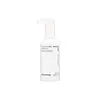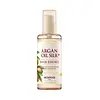What's inside
What's inside
 Key Ingredients
Key Ingredients

 Benefits
Benefits

 Concerns
Concerns

 Ingredients Side-by-side
Ingredients Side-by-side

Water
Skin ConditioningAlcohol Denat.
AntimicrobialPolyglyceryl-10 Laurate
Skin ConditioningButylene Glycol
HumectantParfum
MaskingCaprylyl Glycol
EmollientMenthol
MaskingEthylhexylglycerin
Skin ConditioningChamaecyparis Obtusa Water
MaskingLinalool
PerfumingArginine
MaskingMelaleuca Alternifolia Leaf Oil
AntioxidantCitric Acid
BufferingAlcohol
AntimicrobialLimonene
PerfumingCamellia Sinensis Leaf Extract
AntimicrobialThuja Orientalis Seed Extract
Skin ConditioningPanax Ginseng Root Extract
Emollient1,2-Hexanediol
Skin ConditioningPropanediol
SolventBacillus/Soybean Ferment Extract
Skin ConditioningAcorus Calamus Root Extract
PerfumingTocopherol
AntioxidantChamaecyparis Obtusa Leaf Extract
Skin ConditioningDisodium EDTA
Hydroxypropyl Cyclodextrin
MaskingWater, Alcohol Denat., Polyglyceryl-10 Laurate, Butylene Glycol, Parfum, Caprylyl Glycol, Menthol, Ethylhexylglycerin, Chamaecyparis Obtusa Water, Linalool, Arginine, Melaleuca Alternifolia Leaf Oil, Citric Acid, Alcohol, Limonene, Camellia Sinensis Leaf Extract, Thuja Orientalis Seed Extract, Panax Ginseng Root Extract, 1,2-Hexanediol, Propanediol, Bacillus/Soybean Ferment Extract, Acorus Calamus Root Extract, Tocopherol, Chamaecyparis Obtusa Leaf Extract, Disodium EDTA, Hydroxypropyl Cyclodextrin
Cyclopentasiloxane
EmollientDimethicone
EmollientC12-15 Alkyl Benzoate
AntimicrobialDisiloxane
Skin ConditioningPEG-10
HumectantParfum
MaskingArgania Spinosa Kernel Oil
EmollientCamellia Seed Oil
Silk Powder
Skin ConditioningCeramide NP
Skin ConditioningHexyl Cinnamal
PerfumingBenzyl Salicylate
PerfumingLinalool
PerfumingAlpha-Isomethyl Ionone
PerfumingButylphenyl Methylpropional
PerfumingLimonene
PerfumingGeraniol
PerfumingHydroxycitronellal
PerfumingEugenol
PerfumingCitronellol
PerfumingCyclopentasiloxane, Dimethicone, C12-15 Alkyl Benzoate, Disiloxane, PEG-10, Parfum, Argania Spinosa Kernel Oil, Camellia Seed Oil, Silk Powder, Ceramide NP, Hexyl Cinnamal, Benzyl Salicylate, Linalool, Alpha-Isomethyl Ionone, Butylphenyl Methylpropional, Limonene, Geraniol, Hydroxycitronellal, Eugenol, Citronellol
Ingredients Explained
These ingredients are found in both products.
Ingredients higher up in an ingredient list are typically present in a larger amount.
Limonene is a fragrance that adds scent and taste to a formulation.
It's found in the peel oil of citrus fruits and other plants such as lavender and eucalyptus. The scent of limonene is generally described as "sweet citrus".
Limonene acts as an antioxidant, meaning it helps neutralize free radicals.
When exposed to air, oxidized limonene may sensitize the skin. Because of this, limonene is often avoided by people with sensitive skin.
The term 'fragrance' is not regulated in many countries. In many cases, it is up to the brand to define this term. For instance, many brands choose to label themselves as "fragrance-free" because they are not using synthetic fragrances. However, their products may still contain ingredients such as essential oils that are considered a fragrance.
Learn more about LimoneneLinalool is a fragrance and helps add scent to products. It's derived from common plants such as cinnamon, mint, citrus, and lavender.
Like Limonene, this ingredient oxidizes when exposed to air. Oxidized linalool can cause allergies and skin sensitivity.
This ingredient has a scent that is floral, spicy tropical, and citrus-like.
Learn more about LinaloolParfum is a catch-all term for an ingredient or more that is used to give a scent to products.
Also called "fragrance", this ingredient can be a blend of hundreds of chemicals or plant oils. This means every product with "fragrance" or "parfum" in the ingredients list is a different mixture.
For instance, Habanolide is a proprietary trade name for a specific aroma chemical. When used as a fragrance ingredient in cosmetics, most aroma chemicals fall under the broad labeling category of “FRAGRANCE” or “PARFUM” according to EU and US regulations.
The term 'parfum' or 'fragrance' is not regulated in many countries. In many cases, it is up to the brand to define this term.
For instance, many brands choose to label themselves as "fragrance-free" because they are not using synthetic fragrances. However, their products may still contain ingredients such as essential oils that are considered a fragrance by INCI standards.
One example is Calendula flower extract. Calendula is an essential oil that still imparts a scent or 'fragrance'.
Depending on the blend, the ingredients in the mixture can cause allergies and sensitivities on the skin. Some ingredients that are known EU allergens include linalool and citronellol.
Parfum can also be used to mask or cover an unpleasant scent.
The bottom line is: not all fragrances/parfum/ingredients are created equally. If you are worried about fragrances, we recommend taking a closer look at an ingredient. And of course, we always recommend speaking with a professional.
Learn more about Parfum